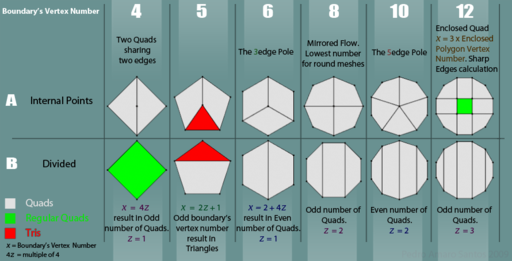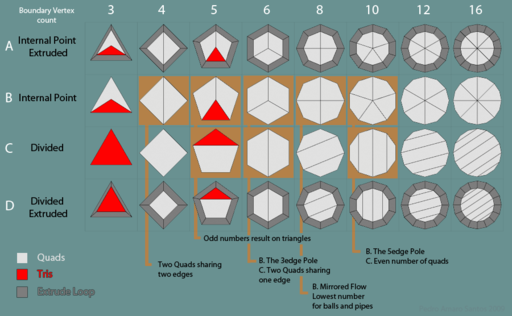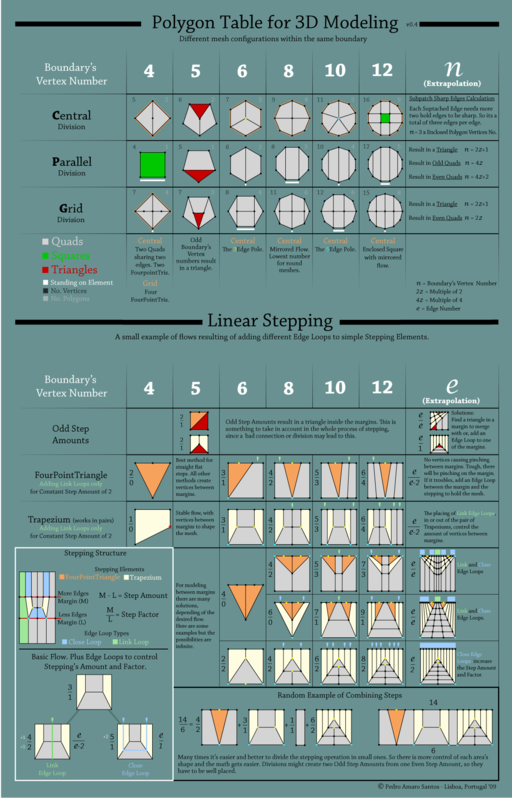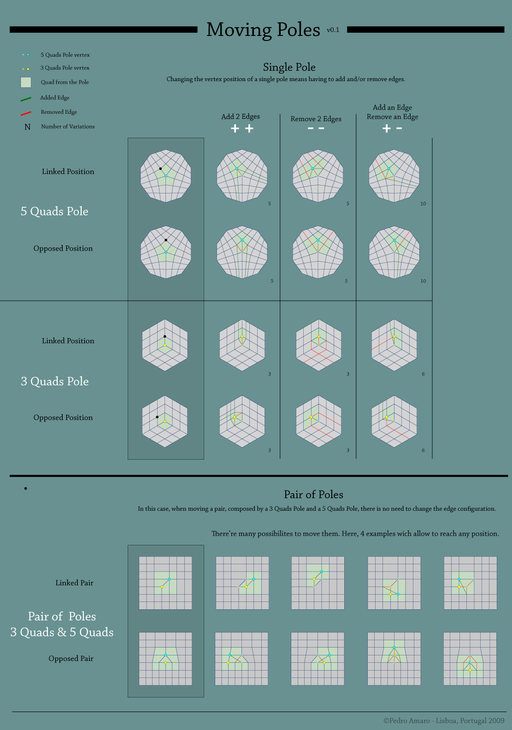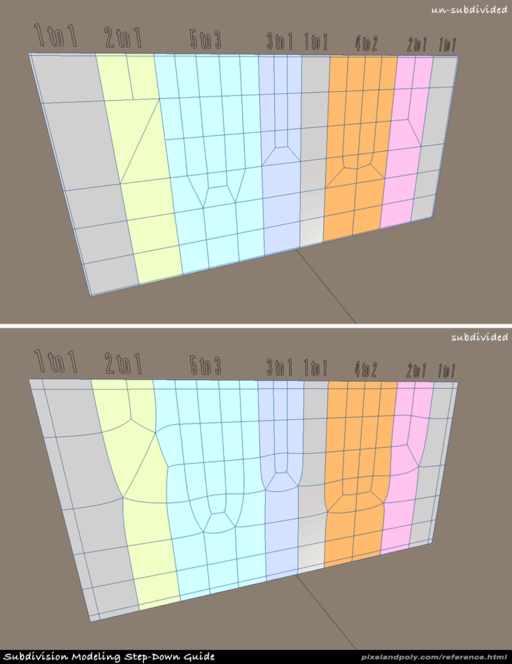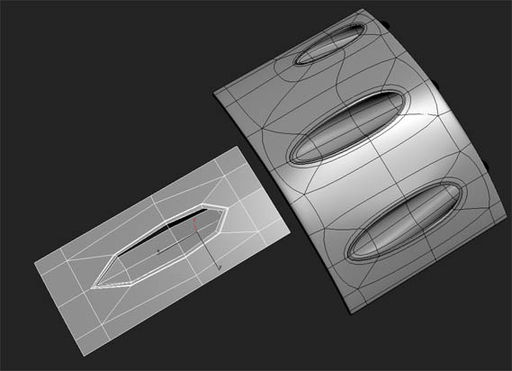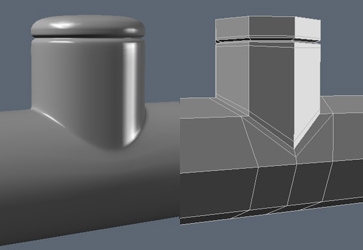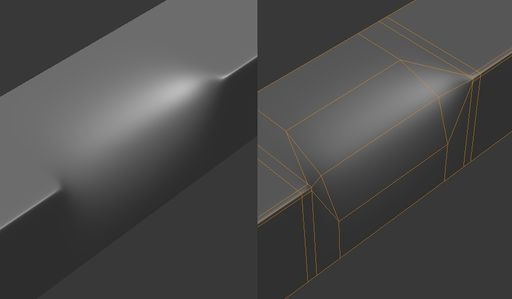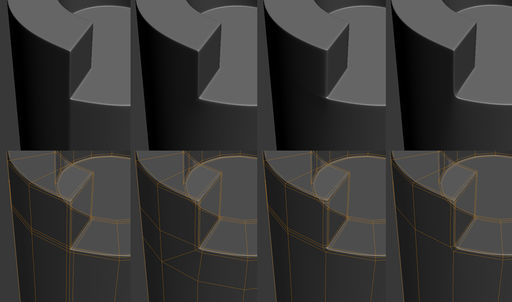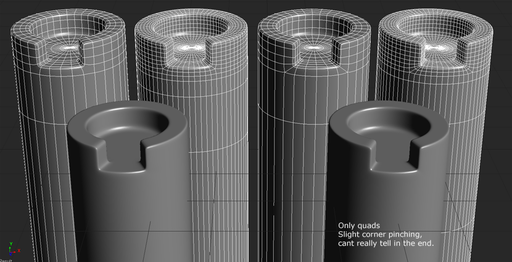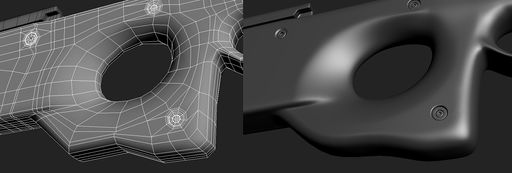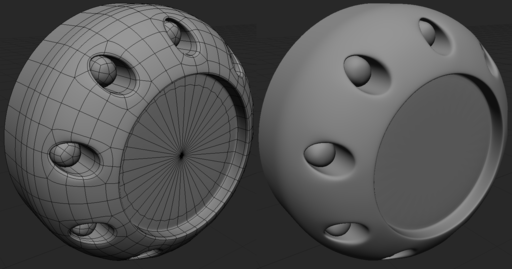Difference between revisions of "Subdivision Surface Modeling"
(→Hard Surfaces) |
(→Hard Surfaces) |
||
| Line 49: | Line 49: | ||
== Hard Surfaces == | == Hard Surfaces == | ||
| + | |||
| + | [[Image:subd_SimonFuchs.jpg|120px]][https://gumroad.com/simonfuchs Basic Hardsurface Tutorials By Simon Fuchs.] | ||
[[Image:subd_howumodeldemshapes.png]] | [[Image:subd_howumodeldemshapes.png]] | ||
| Line 94: | Line 96: | ||
[[Image:subd_chainmailneox.png]] [http://boards.polycount.net/showpost.php?p=1115091&postcount=156 Modeling chainmail in 3ds Max] - by ''[http://polyphobia.de Steffen "Neox" Unger]'' | [[Image:subd_chainmailneox.png]] [http://boards.polycount.net/showpost.php?p=1115091&postcount=156 Modeling chainmail in 3ds Max] - by ''[http://polyphobia.de Steffen "Neox" Unger]'' | ||
| − | |||
| − | |||
<span id="OS"></span> | <span id="OS"></span> | ||
Revision as of 04:43, 9 March 2016
This is a modeling technique for making high-poly hard-surface models, by manipulating a lower-resolution "cage" model and using software to subdivide for a smoother surface.
For game artists, "high-poly hard-surface" usually means creating mechanical/constructed models, which are used to bake into Normal Maps and other types of textures, which are in turn used on lower-resolution game-friendly models.
Subdivision surfaces can also be used for organic shapes.
Not to be confused with SmoothingGroups. The term "box modeling" can be used, though this applies only to the cage modeling process, not to the subdivision part.
Contents
Subdivision Methods
There are many ways to subdivide models. 3ds Max uses mostly the Meshsmooth or Turbosmooth modifiers, while Maya uses mostly the Smooth Mesh Preview (3 key) or Subdiv Proxy.
Beware: Maya's "Subdivision Surface" system is a specialized case which allows different subdivision levels in different areas; this is different from most other modeling tools which divide the whole model instead.
3ds Max and Maya also support edge creasing, which adjusts the subdivision tension on specific edges, creating degrees of edge "hardness". These crease weights typically only work within the original modeling software and are not exportable.
Models made for games are often exported to work with multiple modeling and baking tools... trying to export a model with creases or local subdivisions may not retain the original modeler's intent. Many tools now support Pixar's OpenSubdiv library which may help solve this issue. However the full modeling pipeline should be tested early, to avoid costly errors later on.
Primers
 Subdivision Surfaces: Overview video from The GuerrillaCG Project
Subdivision Surfaces: Overview video from The GuerrillaCG Project
 Subdivision Topology Artifacts video from The GuerrillaCG Project
Subdivision Topology Artifacts video from The GuerrillaCG Project
 OpenSubdiv - Modeling Tips by Pixar.
OpenSubdiv - Modeling Tips by Pixar.
 Hard Surface Fundamentals for 3ds Max by Grant 'sathe' Warwick
Hard Surface Fundamentals for 3ds Max by Grant 'sathe' Warwick
 Técnicas modelado por subdivisión by Cristóbal Vila (English translation by Google)
Técnicas modelado por subdivisión by Cristóbal Vila (English translation by Google)
 Sub-Division Primer from Subdivisionmodeling.com
Sub-Division Primer from Subdivisionmodeling.com
 gotwires Got Wires is all about Subdivision Modeling: Video Tutorials, Sub-D Wires and Modeling Resources.
gotwires Got Wires is all about Subdivision Modeling: Video Tutorials, Sub-D Wires and Modeling Resources.
 Subdivision surface - Wikipedia has good technical info about sub-d.
Subdivision surface - Wikipedia has good technical info about sub-d.
 Shared: My Technical Talk content by Per 'Perna' Abrahamsen.
Shared: My Technical Talk content by Per 'Perna' Abrahamsen.
Hard Surfaces
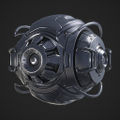 Basic Hardsurface Tutorials By Simon Fuchs.
Basic Hardsurface Tutorials By Simon Fuchs.
 FAQ: How u model dem shapes? Hands-on mini-tuts for mechanical sub-d AKA ADD MORE GEO from the Polycount Boards
FAQ: How u model dem shapes? Hands-on mini-tuts for mechanical sub-d AKA ADD MORE GEO from the Polycount Boards
 Hard Surface Sculpting – ZBrush by Selwy
Hard Surface Sculpting – ZBrush by Selwy
 Making paneling lines as a floater for 3ds Max by Ralphie 'boyluya' Agenar. From the Polycount Forum thread Firefall - Hard surface Art Dump.
Making paneling lines as a floater for 3ds Max by Ralphie 'boyluya' Agenar. From the Polycount Forum thread Firefall - Hard surface Art Dump.
 Using ProBooleans in 3ds Max for sub-d modeling Polycount forum thread.
Using ProBooleans in 3ds Max for sub-d modeling Polycount forum thread.
 3D Tutorials from Per Abrahamsen aka Per128
3D Tutorials from Per Abrahamsen aka Per128
 Minitutorials by Marcus Aseth - by Marcus Aseth. Modeling gun parts, etc.
Minitutorials by Marcus Aseth - by Marcus Aseth. Modeling gun parts, etc.
 hard surface modelling hints pt1 - by 'slipgatecentral'. Creating floaters in Maya, short video tutorial.
hard surface modelling hints pt1 - by 'slipgatecentral'. Creating floaters in Maya, short video tutorial.
 How to create circular holes by subdivision by Etereae Studios (translated into English by Google)
How to create circular holes by subdivision by Etereae Studios (translated into English by Google)
 Subdivision Tips – Hard Surface Modelling by Alberto 'Blaizer' Lozano (translated into English by Google)
Subdivision Tips – Hard Surface Modelling by Alberto 'Blaizer' Lozano (translated into English by Google)
 Creating a Next-Gen Sci-Fi Prop video tutorial by Evan 'racer445' Herbert. Shows the "double smooth" modeling trick for 3ds Max: use smoothing groups to define hard edges, add a TurboSmooth modifier set to preserve smoothing groups, then another without on top.
Creating a Next-Gen Sci-Fi Prop video tutorial by Evan 'racer445' Herbert. Shows the "double smooth" modeling trick for 3ds Max: use smoothing groups to define hard edges, add a TurboSmooth modifier set to preserve smoothing groups, then another without on top.
 Double Smooth - by Ben 'poopinmymouth' MathisVideo tutorial demonstrates the double-smooth technique for fast sub-d modeling.
Double Smooth - by Ben 'poopinmymouth' MathisVideo tutorial demonstrates the double-smooth technique for fast sub-d modeling.
 Model a Detailed High Poly Fire Hydrant in 3ds Max - by Ben Tate
Model a Detailed High Poly Fire Hydrant in 3ds Max - by Ben Tate
 Matte Metal Tutorial - by Philip 'Philipk' KlevestavModeling and texturing a sci-fi metal plate wall using 3ds Max and Photoshop. More modeling and texturing tutorials at http://www.philipk.net/tutorials.html.
Matte Metal Tutorial - by Philip 'Philipk' KlevestavModeling and texturing a sci-fi metal plate wall using 3ds Max and Photoshop. More modeling and texturing tutorials at http://www.philipk.net/tutorials.html.
 ModelingBathroomTiles - by okkun
ModelingBathroomTiles - by okkun
 modeling hi poly weapons is painful, any tips? from the Polycount Boards
modeling hi poly weapons is painful, any tips? from the Polycount Boards
 Technical highpoly workflow tutorial and scripts from the Polycount Boards
Technical highpoly workflow tutorial and scripts from the Polycount Boards
 Modeling chainmail in 3ds Max - by Steffen "Neox" Unger
Modeling chainmail in 3ds Max - by Steffen "Neox" Unger
Organic Surfaces
 The Making of Moff - High Polygon Realistic Character Creation - by Darren "Daz" Pattenden
The Making of Moff - High Polygon Realistic Character Creation - by Darren "Daz" Pattenden
 Modeling shoe laces, boot laces... etc. from the Polycount Boards
Modeling shoe laces, boot laces... etc. from the Polycount Boards
 Digital Sculpture Techniques by Bay Raitt and Greg Minter
Digital Sculpture Techniques by Bay Raitt and Greg Minter
 The Pole from the Subdivisionmodeling.com forum. Saved here: Media:SubdivisionModelingDotCom_The-Pole.pdf (10MB PDF)
The Pole from the Subdivisionmodeling.com forum. Saved here: Media:SubdivisionModelingDotCom_The-Pole.pdf (10MB PDF)
 The Pole - Revised from the Subdivisionmodeling.com forum
The Pole - Revised from the Subdivisionmodeling.com forum
 Media:SubdivisionModelingDotCom_Topology-Body.pdf (1MB PDF) from the Subdivisionmodeling.com forum.
Media:SubdivisionModelingDotCom_Topology-Body.pdf (1MB PDF) from the Subdivisionmodeling.com forum.
 Media:SubdivisionModelingDotCom_Topology-Head.pdf (8MB PDF) from the Subdivisionmodeling.com forum.
Media:SubdivisionModelingDotCom_Topology-Head.pdf (8MB PDF) from the Subdivisionmodeling.com forum.
Tips & Tricks
More Information
- FAQ: How u model dem shapes? Hands-on mini-tuts for mechanical sub-d AKA ADD MORE GEO Polycount forum thread.
- BaseMesh
- CharacterSculpting
- PolygonCount
- ReTopologyModeling
- Tools
- Topology
